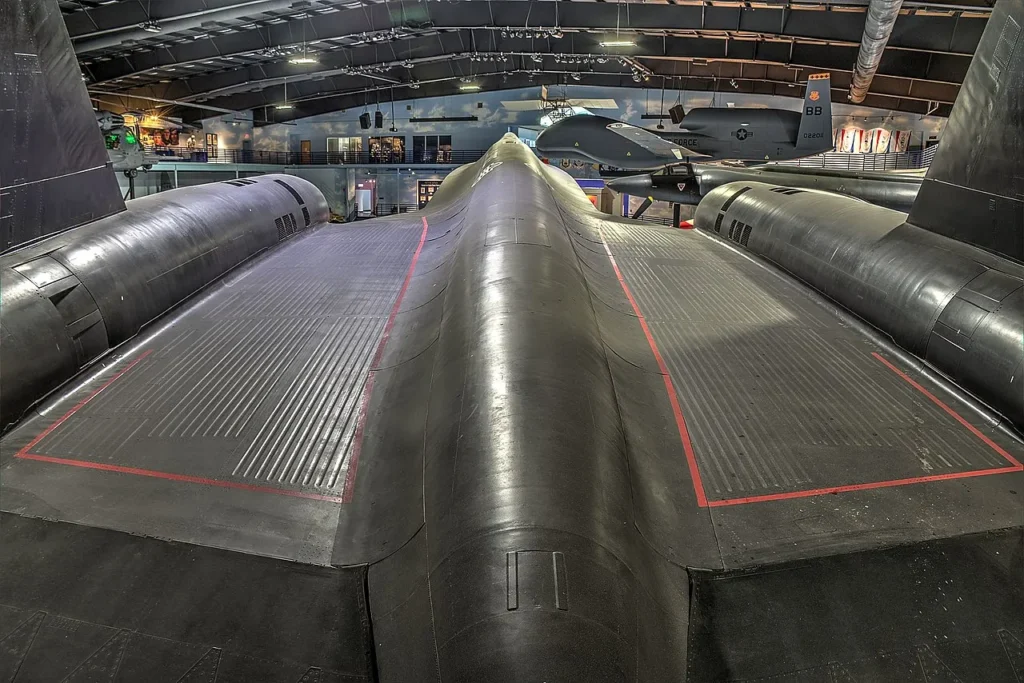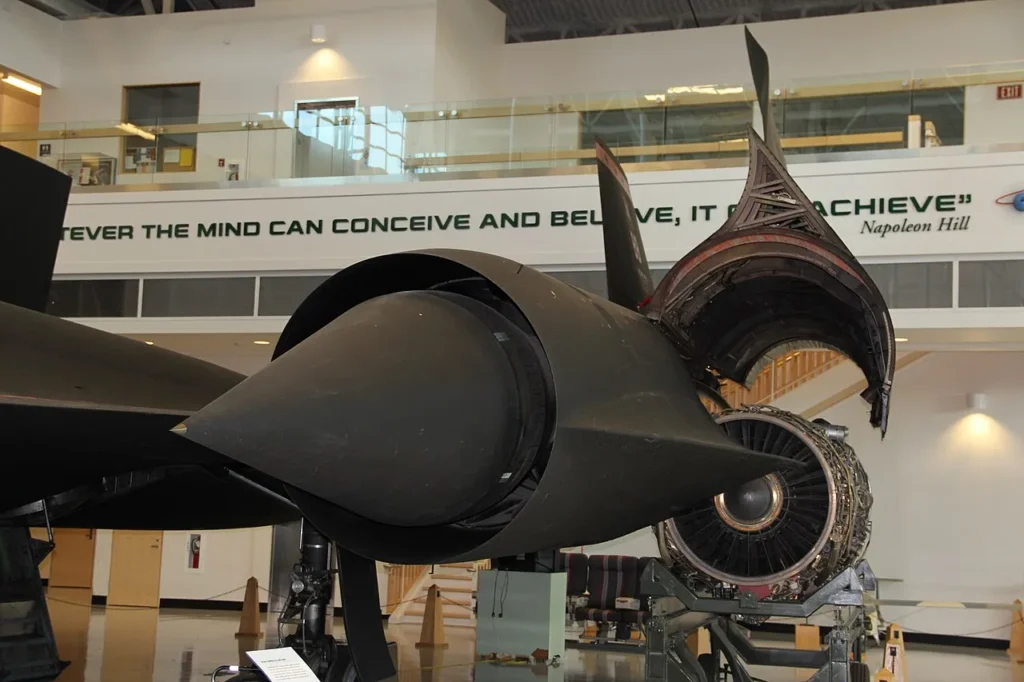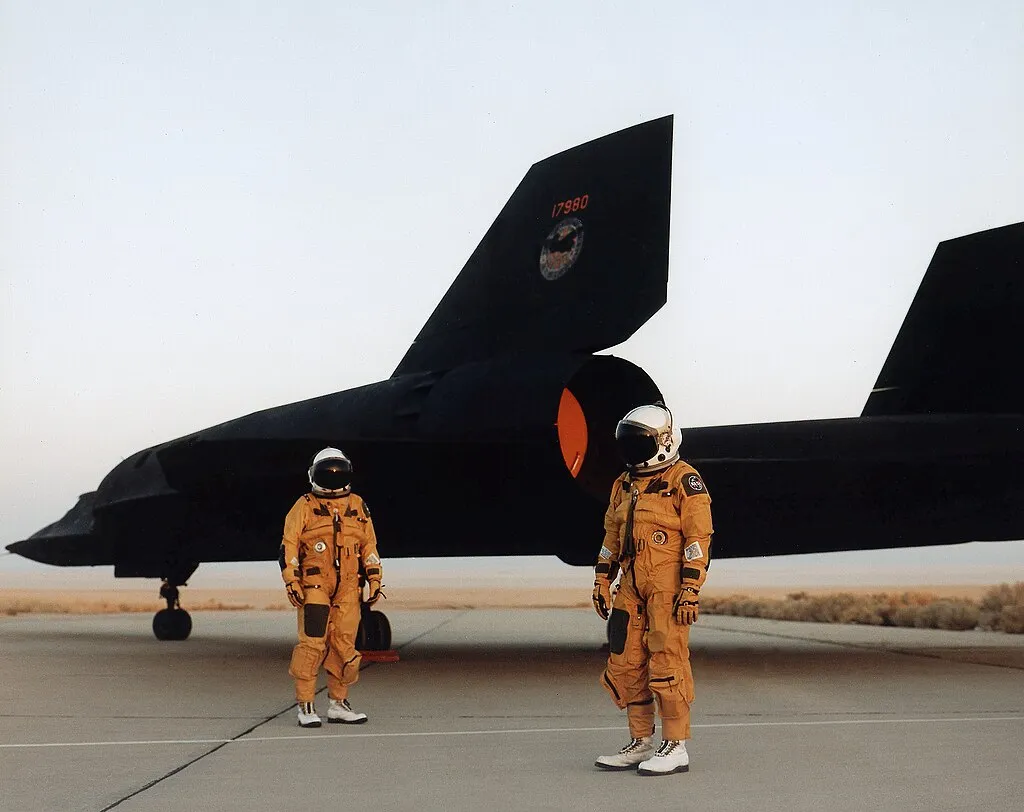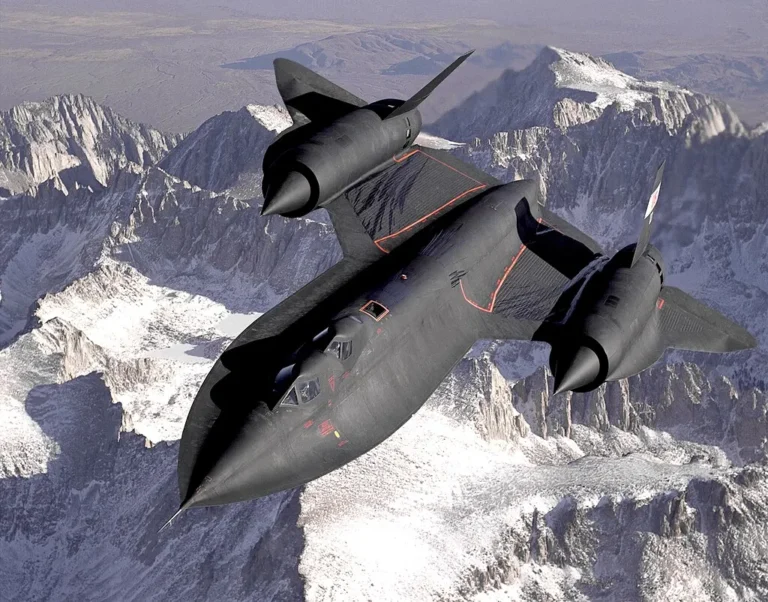The SR-71 Blackbird is one of aviation’s greatest technological achievements of the 20th century. It was developed by Lockheed’s advanced “Skunk Works” division during the height of the Cold War. This remarkable aircraft pushed the boundaries of aeronautical engineering to unprecedented levels!
The sleek, titanium-bodied reconnaissance plane was designed to fly at extreme heights and speeds that even modern aircraft struggle to match over 5 decades later!

Fastest Jet in the World
When it first took flight in 1964, the SR-71 represented a quantum leap in aviation technology. Operating at the edge of space at heights of 85,000 feet and reaching speeds exceeding Mach 3.2 (approximately 3,530 kmph), the Blackbird could outrun any threat.
This extraordinary aircraft emerged from the classified A-12 program under the guidance of aircraft designer Clarence “Kelly” Johnson.
His team created a platform capable of gathering critical intelligence while remaining virtually untouchable to enemy defences.

Cold War Asset
The SR-71 Blackbird was the United States’ premier strategic reconnaissance platform during the tense decades of the Cold War.
Officially entering service in 1966, the aircraft provided vital intelligence gathering capabilities over hostile territories when satellite technology was still in its infancy.
The Blackbird’s unparalleled speed, altitude, and sophisticated sensor suite allowed it to penetrate deep into denied airspace, collect critical information, and escape before defenders could effectively respond.
Conventional reconnaissance aircraft relied on stealth or electronic measures for survival. On the other hand, the SR-71’s primary defence was just its extraordinary performance envelope. Operating from bases in the United States, the United Kingdom, Japan, and Okinawa, Blackbird crews took missions over some of the most heavily defended airspace in the world. These airspaces include the Soviet Union, Eastern Europe, North Korea, and Vietnam.

Engineering Marvel
What made the SR-71 truly revolutionary was its innovative engineering solutions to the extreme challenges of sustained high-speed flight. The aircraft was constructed primarily of titanium alloy. It could withstand the intense heat generated by air friction at Mach 3+ speeds.
Ironically, much of this titanium was obtained from the Soviet Union, the very nation the aircraft was designed to spy upon.
The Blackbird’s propulsion system was equally groundbreaking. It’s 2 Pratt & Whitney J58 engines represented a hybrid design. They functioned as conventional turbojets during takeoff and landing but transitioned to ramjet-like operation at high speeds.
This unique engine configuration, combined with specialised high-temperature fuel (JP-7), allowed the SR-71 to maintain its exceptional speed for extended periods, a capability no other aircraft of its era could match!

Untouchable in Hostile Skies
Throughout its operational history spanning from 1966 to 1998, the SR-71 demonstrated remarkable survivability. Over 4,000 surface-to-air missiles were fired at various Blackbirds during missions. Not a single aircraft was ever lost to enemy action! When threatened, SR-71 pilots simply accelerated and climbed beyond the reach of interceptors and missiles.
The aircraft’s defensive capabilities extended beyond pure speed. Its matte black radar-absorbent paint and distinctive chined fuselage design gave the Blackbird early stealth characteristics. This reduced its radar cross-section significantly to approximately 0.1 square meters.
It is not completely invisible to radar like modern stealth aircraft. But the SR-71’s radar signature was notably diminished for an aircraft of its size, further enhancing its survivability.

Legacy
Of the 32 SR-71 Blackbirds manufactured, 12 were lost to accidents and technical failures. This is a testament to the inherent risks of operating such a cutting-edge platform.
The program’s only known fatality was Lockheed engineer Jim Zwayer!
The USAF officially retired the Blackbird fleet in 1998. They cited high operational costs and the increasing capabilities of satellite reconnaissance and unmanned aerial vehicles.
Today, aviation enthusiasts can view preserved SR-71s at prestigious museums around the world. This includes the Smithsonian’s Udvar-Hazy Centre, the National Museum of the United States Air Force, and the American Air Museum at Duxford, England.
The SR-71 Blackbird remains unmatched in aviation history for its combination of speed, altitude capability, and operational longevity. Often described as “a bullet with wings,” this magnificent aircraft continues to captivate the imagination as the pinnacle of Cold War aerospace innovation and a symbol of American technological prowess.
Stay tuned with us. Further, follow us on social media for the latest updates.
Join us on Telegram Group for the Latest Aviation Updates. Subsequently, follow us on Google News

